Editor’s note: TPG’s Gene Sloan is sailing on Silversea Cruises’ Silver Explorer as a guest of the line. The opinions expressed below are entirely his and weren’t subject to review by Silversea.
The fiercest waterway in the world doesn’t look nearly so fierce from 35,000 feet.
Gazing down at the Drake Passage on Friday from a chartered BAe 146-200, I could hardly make out the ripples of the waves. The 500-mile-wide body of water between the tip of South America and Antarctica almost looked … serene.
Alas, I knew better.
The waves down below were more than 15-feet-high, according to a wave-tracking website that I had checked hours earlier. And that was an improvement from even heavier seas the day before.
For more cruise news, guides and tips, sign up for TPG’s cruise newsletter
On some days, as I’ve experienced myself on a ship-based trip to Antarctica, the churn in the Drake Passage can be even more extreme. Waves up to 30 or even 40 feet high at times are not uncommon.
Such monstrous waves are the reason I found myself on Friday zipping across the Drake Passage in a BAe 146-200 instead of crossing it by ship.
I was flying to Antarctica as part of a test of luxury cruise operator Silversea Cruises‘ new Antarctica Bridge program — a “fly-cruise” itinerary specifically designed for travelers who want to visit Antarctica without having to endure a potentially stomach-churning ship crossing of the Drake Passage.
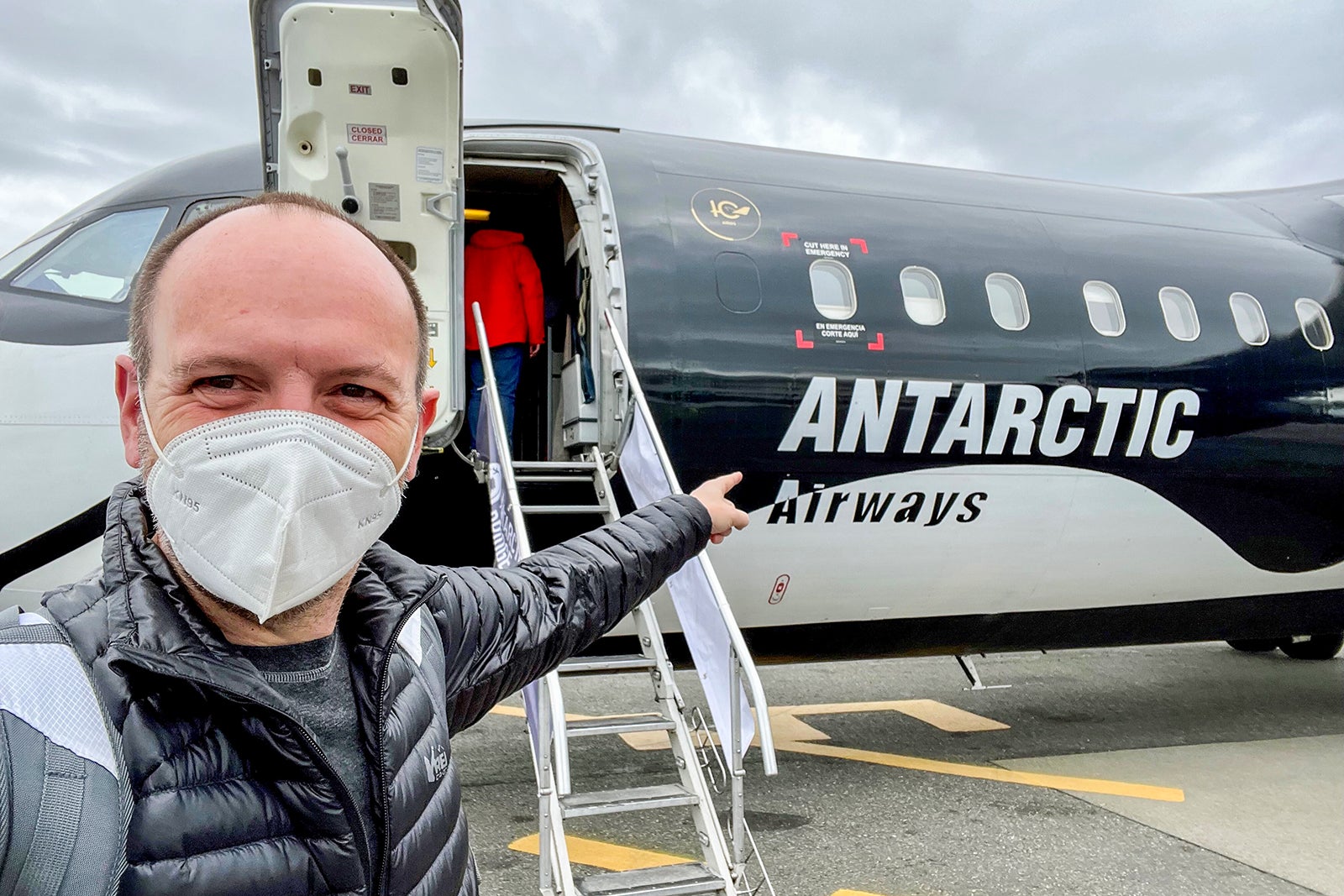
The vast majority of trips to Antarctica start with a voyage across the often-rough waters of the Drake Passage in some sort of seagoing vessel — often a small expedition ship that carries around 100 to 200 people. That same vessel then takes visitors on a multiday exploration of the mountain, glacier and penguin-lined coast of the Antarctica Peninsula before sailing them back across the Drake Passage to South America.
The Silversea program, by contrast, involves flying directly to Antarctica from Punta Arenas, Chile, at the very southern tip of South America, on a small, tough plane capable of landing on the icy continent before transferring to an expedition ship that has been prepositioned there.
Related: Why this might be the best year ever to visit Antarctica
The flights take advantage of a small gravel runway at an Antarctic base operated by Chile on Antarctica’s King George Island, which also is home to research stations operated by Brazil, Russia, Poland, Argentina, Korea, Uruguay, Peru and China.
The ship that Silversea has prepositioned in Antarctica, the 144-passenger Silver Explorer, has sailed to Antarctica for many years but has never before been used in such a program. This week’s trip to Antarctica, which I will be writing about in more depth over the coming weeks, is only Silversea’s second Antarctica Bridge departure. The first such departure finished on Friday.
Two hours instead of two days
The typical voyage to Antarctica begins with a two-day crossing of the Drake Passage from the southern tip of South America. As I saw on Friday, Silversea’s new fly-cruise experience covers the same ground in just two hours.
As noted above, the experience starts in Punta Arenas — one of the southernmost settlements in South America. The 105 passengers on my trip had arrived in the town on Thursday on a chartered flight from Santiago, Chile, and spent the night at a hotel across from the town square.
In the morning, after a hearty buffet breakfast at the hotel, we were whisked in buses to a private terminal at the Punta Arenas airport that was exclusive to our group. Just outside the building, two small planes that would be taking us to Antarctica awaited.
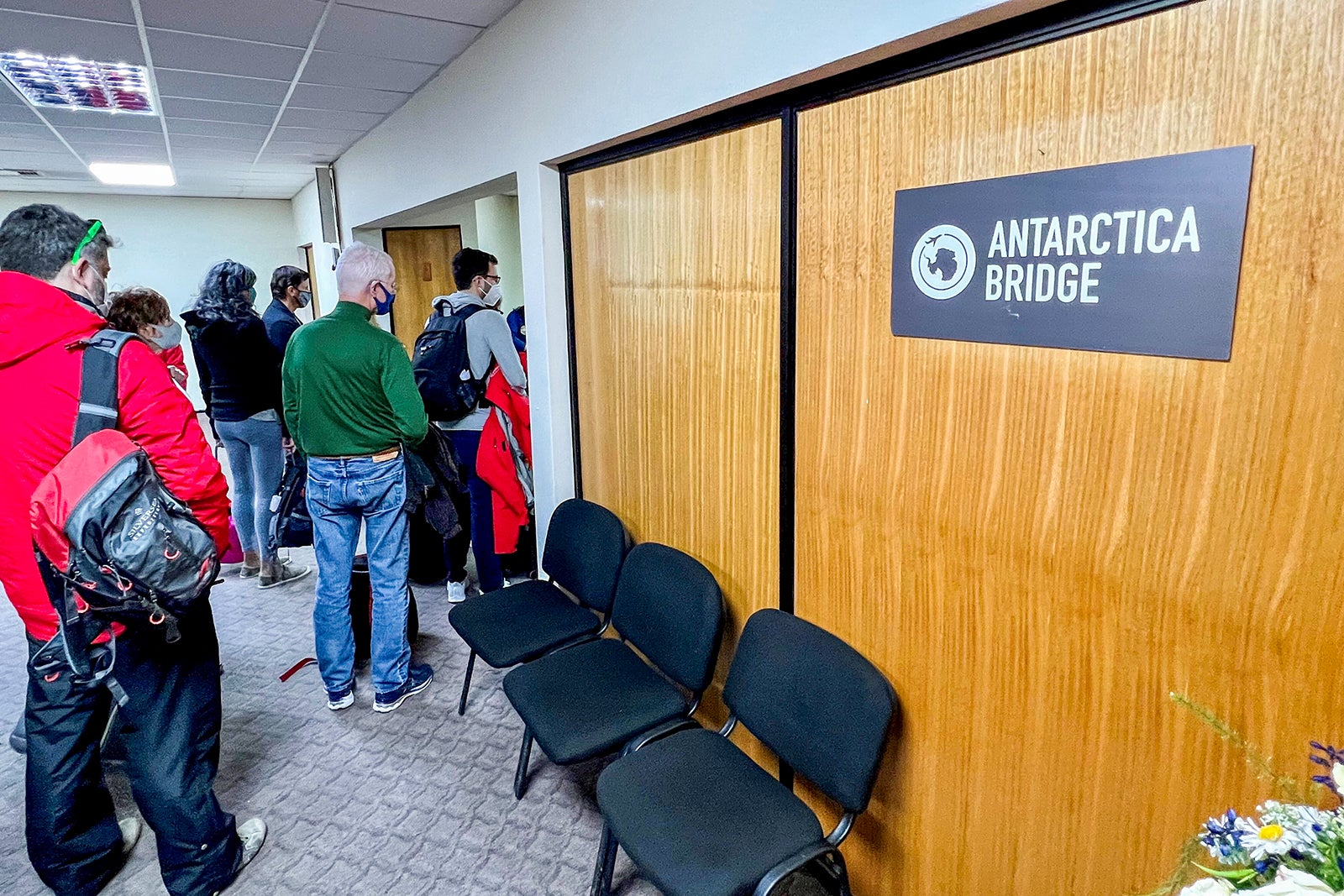
I was assigned to the first of the two planes, which like its sister was a BAe 146-200 operated by Punta Arenas-based Aerovias DAP. The small Chilean airline has been running charter flights to Antarctica’s King George Island for many years to service the international research stations and bases there and also, increasingly, for tourism.
Featuring four engines hanging from high-mounted wings and a toughened underbelly, the BAe 146-200 is a workhorse of an aircraft that is specially designed to land on short and unimproved runways such as the one that we were headed to in Antarctica.
Our destination, Chile’s Presidente Eduardo Frei Montalya base on Antarctica’s King George Island, had a rough gravel runway that only measures about 4,200 feet in length.
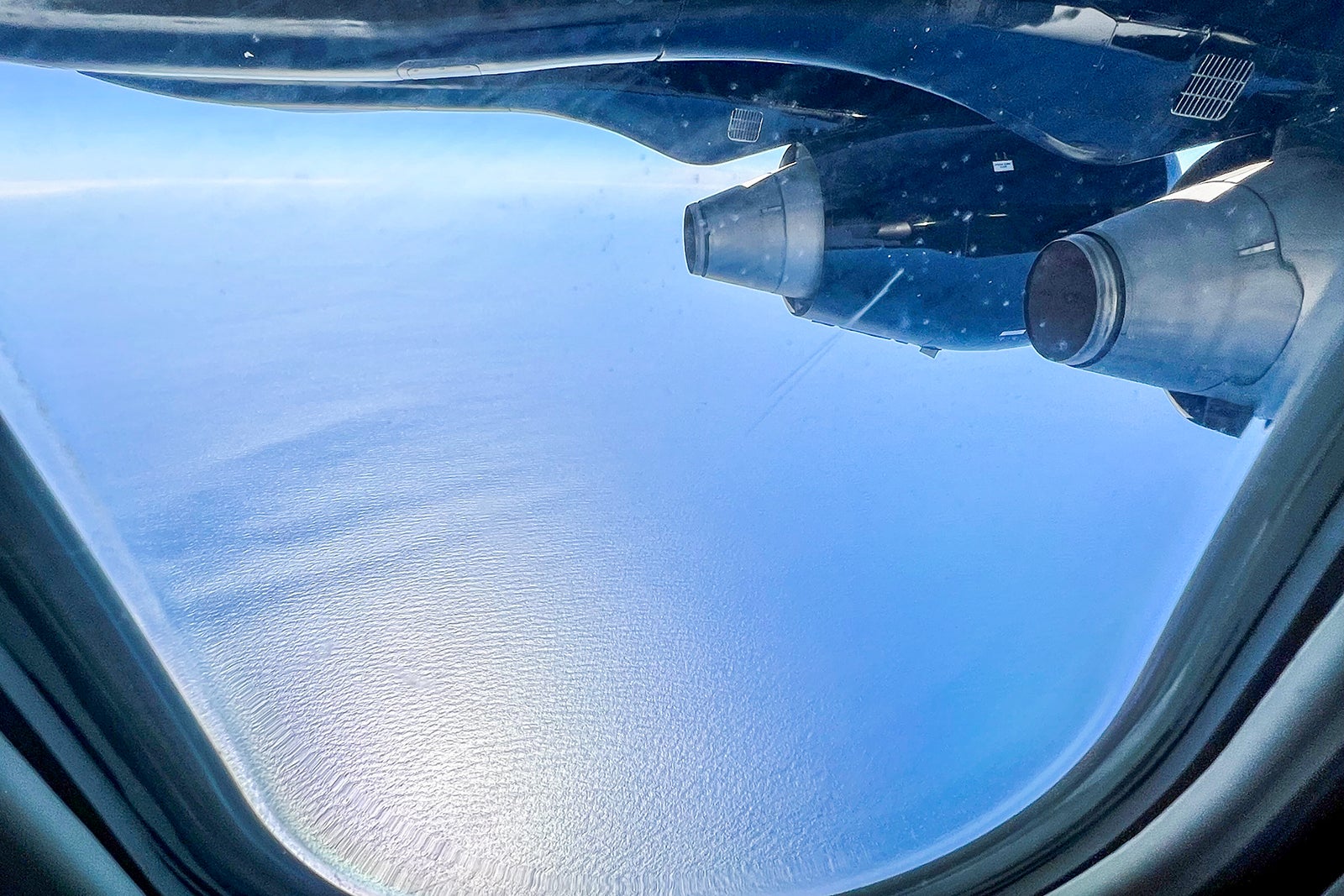
After a security screening at Silversea’s private terminal, I soon was walking across the tarmac with about 50 of my fellow passengers to the first of the planes, which — delightfully — had been painted with an undulating black-and-white design that resembled the coat of a giant Orca and the branding “Antarctic Airways” on its side.
Configured for 80 passengers, the aircraft offered comfortable leather seats that were spread apart wider than is sometimes the case for the model. Instead of three seats on each side of its center aisle, it was rigged for just two on one side and three on the other.
Only about two-thirds of the seats on the plane were full.
In a notable touch, flight attendants on the plane were dressed in Silversea’s traditional grey colors with Silversea-branded name tags.
Zooming over the Drake
After a short taxi to the runway, we soon were taking off — the power of the plane’s four engines quickly blasting us skyward.
As we climbed, I could see Punta Arenas in the distance and the famed Magellan Strait, which separates the mainland of South America with Tierra del Fuego and was first traversed in 1520 by the explorer Ferdinand Magellan. But the views were only fleeting as soon we were above the clouds, on our way south toward Antarctica.
For the first 45 minutes of the flight, pretty much all I could see out the windows were clouds, with just a few small breaks revealing tantalizing glimpses of the Drake Passage below. But then the skies opened up, and the full majesty of the famous waterway was revealed.
As noted above, the Drake Passage didn’t look all that menacing from six miles above the Earth. It wasn’t until we began descending an hour later, near King George Island, that the fury of the seas began coming into focus.
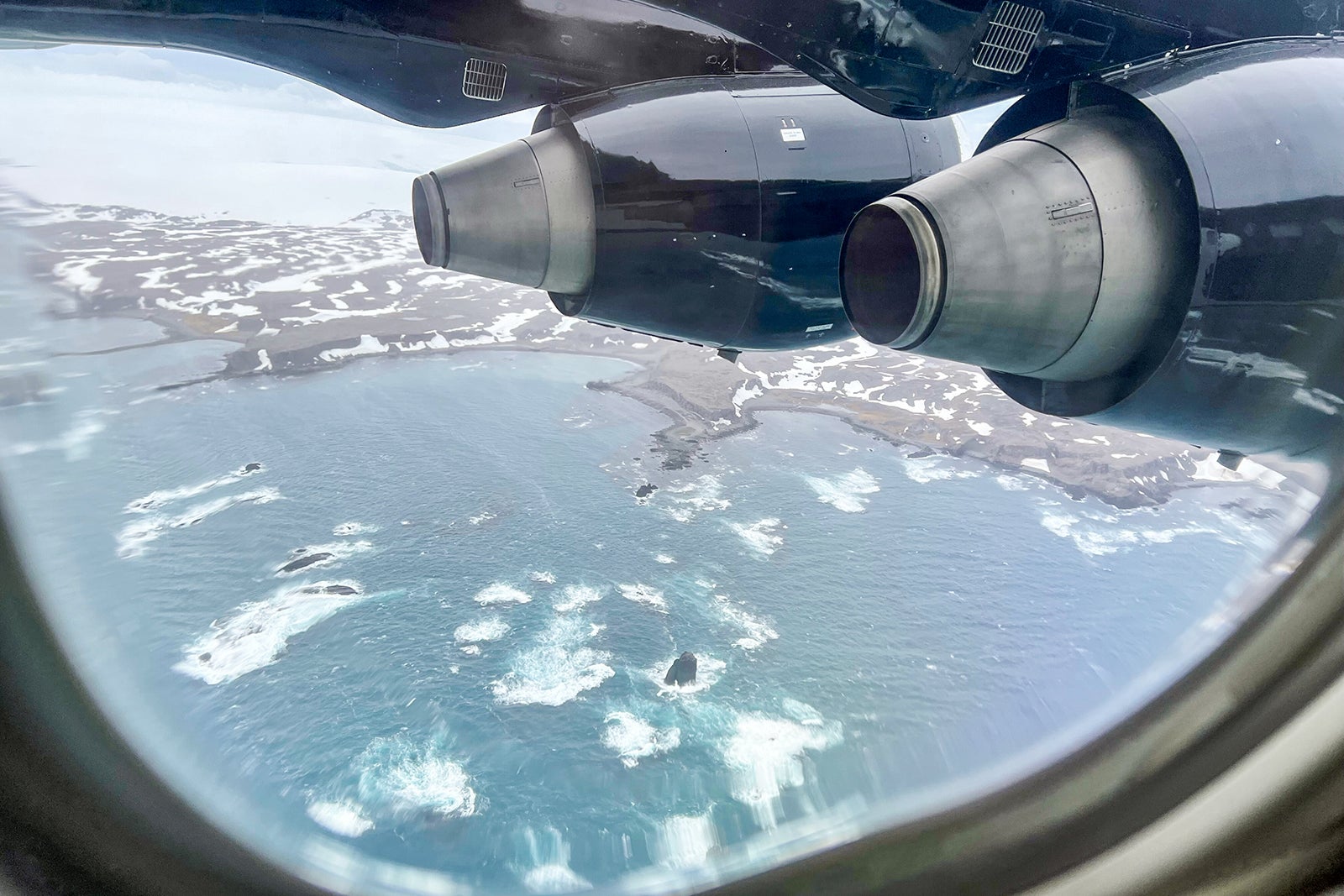
As we dropped to just a few thousand feet, I began making out wind-blown white crests atop the waves, and the heavy swell of the ocean became more noticeable.
I was happy to be flying above it.
A hearty snack and morning whiskey
Normally, when Aerovias DAP operates charter flights to the Chilean base on King George Island, it’s a relatively spartan affair. But famous-for-its-luxury Silversea has worked with the company to offer an upgraded onboard experience.
Halfway through the flight, while we still were high above the Drake Passage, the flight attendants came through the aisle serving a custom-designed-for-Silversea midmorning snack on solid porcelain plates, with real silverware and glass-and-metal miniature salt and pepper shakers. It consisted of small chicken and salmon sandwiches made with phyllo dough, fruit and Chilean sopaipillas with a mild onion, garlic, parsley and pepper salsa.
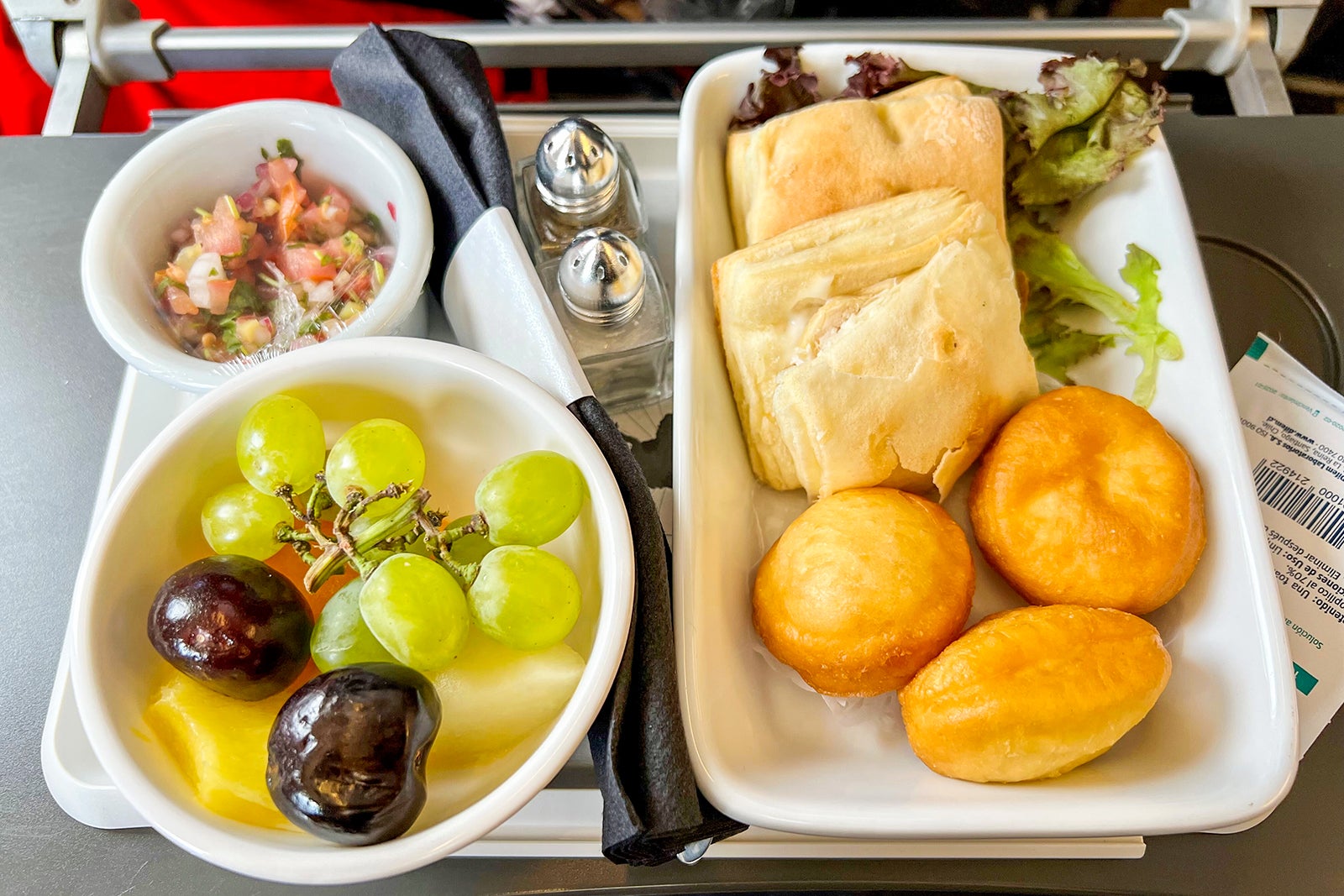
The flight attendants also brought around a complimentary drink cart stocked with everything from Johnny Walker Black Label whiskey to homemade Pisco Sours (a specialty of South America), as well as a variety of beer, wine, soft drinks, coffee and tea.
Given that it still was before noon, I stuck with the coffee. But I noticed quite a few of the passengers on board went with a more high-octane option. Their vacation had begun.
Flying gravel at the landing
Our approach to King George Island was dramatic. As the shore of the island came into view, I could see rugged, rocky terrain partially covered with snow and glaciers.
After crossing over the island’s narrow Fildes Peninsula, descending, we looped around over a bay to line up with the gravel runway at the Chilean base, the central buildings of which we passed over in the seconds before landing. As we touched the ground, the wheels kicked up a storm of gravel that whizzed by my window. I could hear the rat-a-tat-tat of it pelting the bottom of the plane.
The pelting didn’t last for long as the plane made a very quick stop, aided by a clamshell airbrake in its tail and full-width spoilers on its wings. Once it was firmly on the ground, a roar of cheers and clapping rang through its interior.
We had arrived!
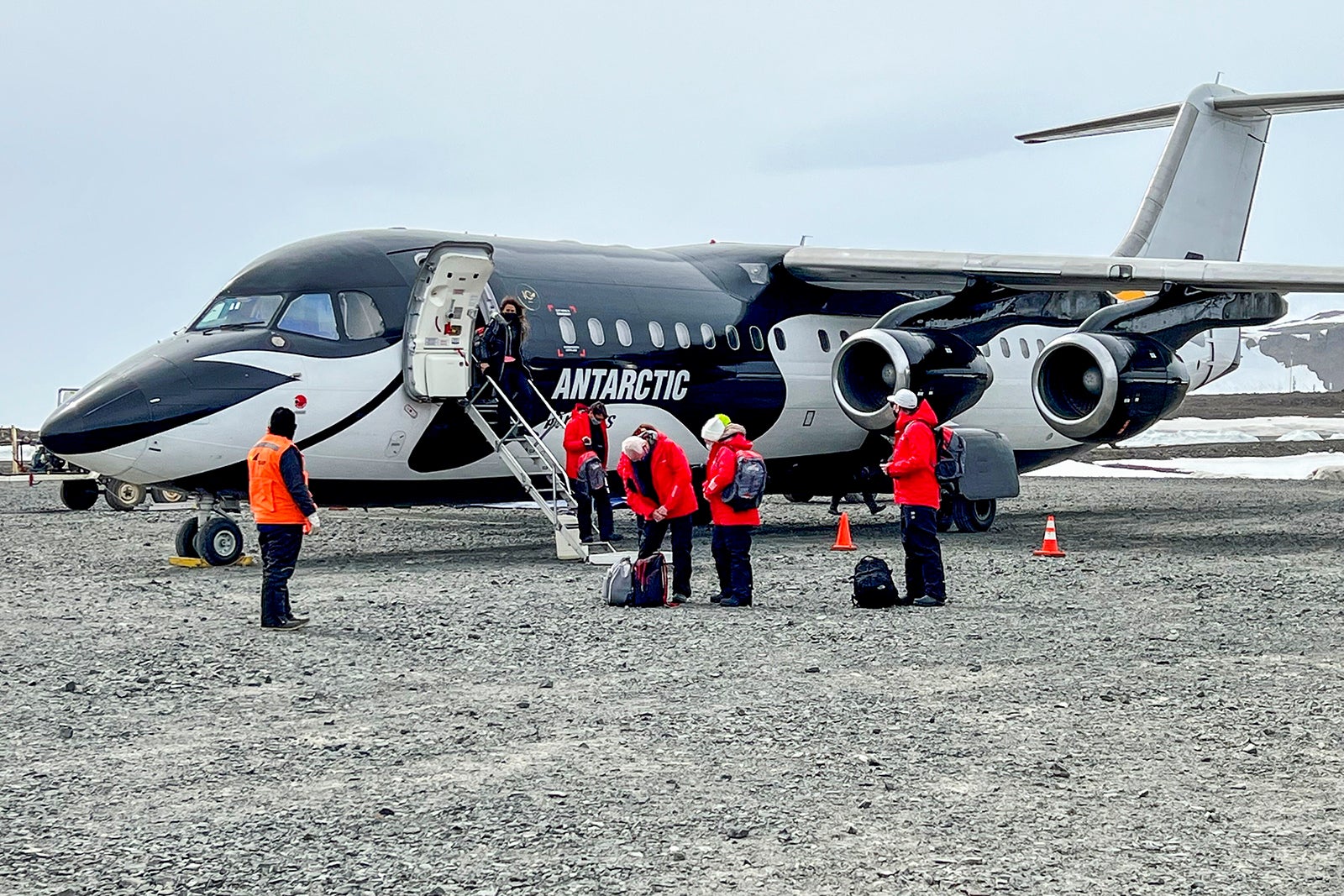
Soon we were parked at the far end of the runway, and within moments, we were descending the plane’s staircase for our first steps on the most remote, least-visited continent on Earth.
It was a bit of an anti-climatic moment, as the Chilean government doesn’t allow for milling around on the runway for selfies and congratulations. In keeping with the Chilean base’s rules, we were quickly lined up single-file to cross the runway and head down a mile-long path to the bay that we just had flown over.
It was there that the 144-passenger Silver Explorer — our home for the next six nights — was waiting for us out at anchorage.
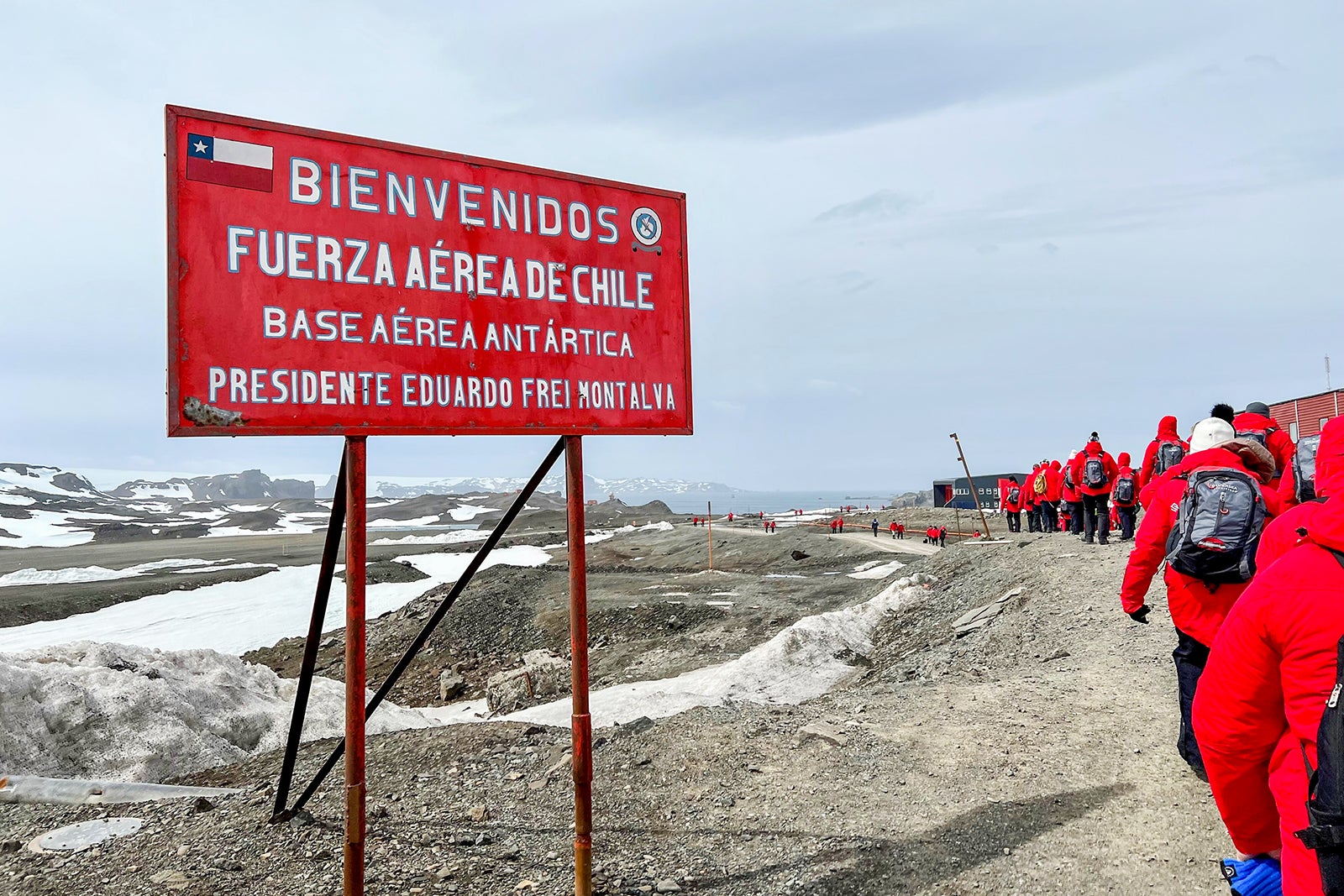

Wearing bright red Silversea parkas that the line had handed out to us the night before (they were waiting for us in our hotel rooms — one of the many included amenities of the trip), we stood out as we shuffled down to the water’s edge. There was no stopping to meet with anyone at the Chilean base or other nearby bases. Visitor interactions with the residents of Antarctica bases are on hold for now as part of heightened safety measures related to COVID-19.
The last part of the day’s journey involved boarding a Zodiac boat at the rocky edge of the bay for a quick ride out to the ship. Along the way, we got a treat — our first sighting of Antarctic penguins. They were frolicking in the waters beside us as we cut through the waves, and we stopped for a few minutes to take them in.
Silversea isn’t the first company to offer a fly-cruise trip to Antarctica that avoids a ship crossing of the Drake Passage. Several expedition cruise operators including Quark Expeditions and Antarctica 21 have been offering such trips for more than a decade. These expedition cruise operators also have worked with Aerovias DAP to arrange flights straight to ships prepositioned at King George Island.
But such fly-cruise trips still are relatively rare. About 90% of travelers to Antarctica still arrive at the continent by ship. And Silversea is the first high-end cruise operator to offer such packages.
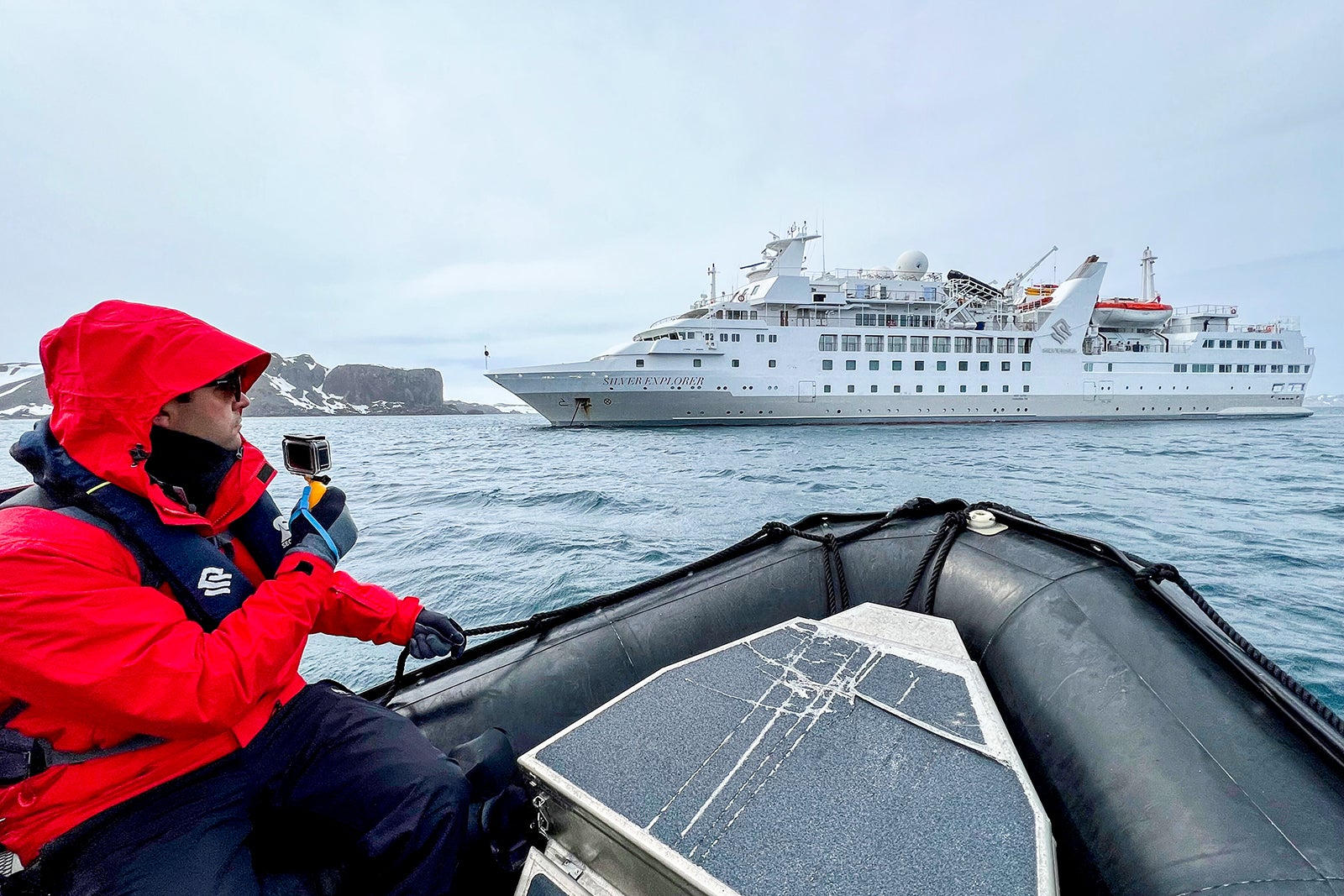
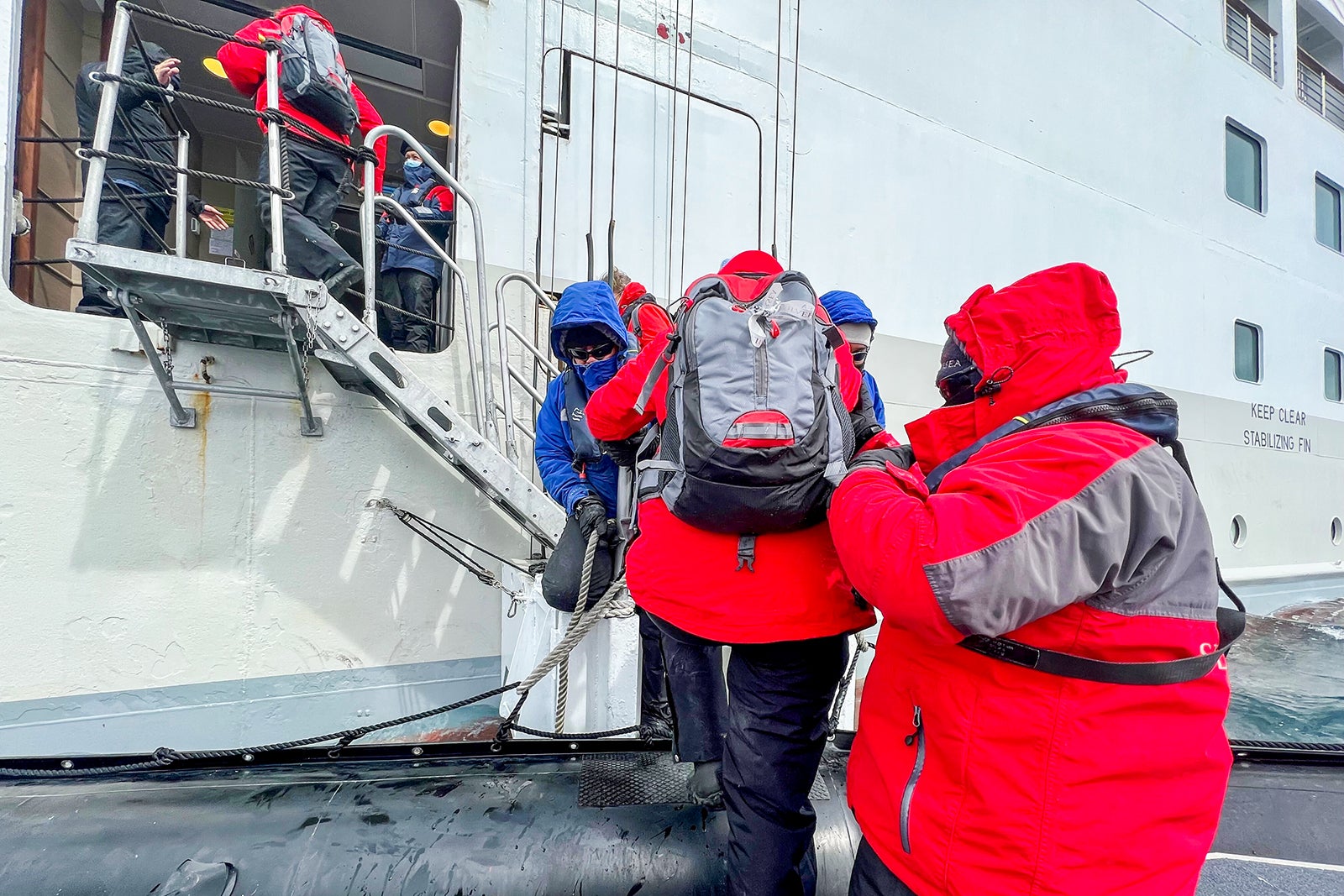
There are a couple of downsides to Antarctica trips that include a flight straight to Antarctica. For starters, they are more expensive than traditional sail-to-Antarctica trips. Silversea’s fly-cruise trips to Antarctica start at $17,500 per person — about 46% more than the starting rates for its shortest traditional Antarctica trips.
There also is a modest risk that poor weather at the landing site at King George Island could cause flights to and from the island to be delayed or canceled. The landings on the rough airstrip at the Chilean base require that pilots have a visual sighting of the runway.
To compensate for the risk, Silversea has built extra time into the itinerary. The line also has blocked extra nights at the hotel in Chile where passengers begin the trip, so they have a place to stay if the charter planes to Antarctica are delayed from flying to the continent overnight.
In our case, though, the flight to Antarctica went off without a hitch. We took off at 10:04 am, local time, just about on schedule, and landed exactly 2 hours and 8 minutes later.
The flight, notably, was perfectly smooth. There wasn’t a single turbulent moment in our crossing of the Drake Passage.
As someone who has suffered through a roller coaster-like ride across the Drake Passage in the past, that’s something that I see as a big advantage to this new itinerary.
It’s hard to argue with perfectly smooth.
TPG’s Gene Sloan will be reporting live this week from Silver Explorer as it sails on one of Silversea’s first Antarctic Bridge itineraries. You can find all of his dispatches on his author’s page.
Planning a cruise? Start with these stories:
- The 5 most desirable cabin locations on any cruise ship
- The 8 worst cabin locations on any cruise ship
- A quick guide to the most popular cruise lines
- 21 tips and tricks that will make your cruise go smoothly
- 15 ways cruisers waste money
- 12 best cruises for people who never want to grow up
- What to pack for your first cruise
Featured image by Gene Sloan/The Points Guy.
